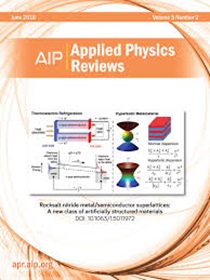A multiscale 3D hotspot-rich nanostructured substrate for biomolecular detection of SARS-CoV-2
IF 11.9
1区 物理与天体物理
Q1 PHYSICS, APPLIED
引用次数: 0
Abstract
The current fabrication methods of surface-enhanced Raman scattering (SERS) chips used for biological detection mostly require antibodies conjugated on nanostructured metals or additionally connected to a reporter, which leads to complicated fabrication processes and increases the cost of these chips. More importantly, only a single-layer (2D) signal source is generated on the substrate of the chip, resulting in poor sensitivity. Herein, we constructed a single-component, multiscale, three-dimensional SERS (M3D-SERS) substrate from silver nanowires (AgNWs) packing. According to our results, the Raman enhancement effect of the M3D-SERS substrate was related to the degree of AgNWs stacking along the z axis. In addition, the light source-dependent plasmonic partition and hotspot formation of the M3D-SERS substrate were evaluated by the finite integration technique to prove that M3D-SERS offers advantages, with isotropic localized surface plasmon resonance as well as homogeneous hotspot distribution, for SERS over its 1D and 2D counterparts. Experimentally, the optimal construction of the M3D-SERS chip was explored and established based on the Raman signal enhancement of bovine serum albumin, and consequently, the efficiency of the M3D-SERS chip in detecting SARS-CoV-2-related biomolecules was investigated based on the detection superiority to biomolecules. This study demonstrates a simple, label-free, pre-treatment-free potential biosensor technology that can be used in healthcare units. Furthermore, in combination with a suitable laser light source, this technology can be applied for efficient detection in point-of-care tests with a handheld spectrometer.用于SARS-CoV-2生物分子检测的多尺度3D富热点纳米结构底物
目前用于生物检测的表面增强拉曼散射(SERS)芯片的制造方法大多需要将抗体偶联在纳米结构金属上或额外连接到报告基因上,这导致制造工艺复杂,增加了芯片的成本。更重要的是,在芯片的衬底上仅产生单层(2D)信号源,导致灵敏度较差。在这里,我们用银纳米线(AgNWs)封装构建了一个单组分、多尺度、三维SERS (M3D-SERS)衬底。根据我们的研究结果,M3D-SERS衬底的拉曼增强效应与AgNWs沿z轴的堆积程度有关。此外,通过有限积分技术评估了M3D-SERS衬底的光源依赖等离子体划分和热点形成,以证明M3D-SERS具有各向同性局部表面等离子体共振和均匀热点分布的优势。实验方面,基于牛血清白蛋白的拉曼信号增强,探索并建立了M3D-SERS芯片的优化结构,并基于对生物分子的检测优势,研究了M3D-SERS芯片检测sars - cov -2相关生物分子的效率。本研究展示了一种简单、无标签、无预处理的潜在生物传感器技术,可用于医疗保健单位。此外,与合适的激光光源相结合,该技术可用于手持式光谱仪的即时检测。
本文章由计算机程序翻译,如有差异,请以英文原文为准。
求助全文
约1分钟内获得全文
求助全文
来源期刊

Applied physics reviews
PHYSICS, APPLIED-
CiteScore
22.50
自引率
2.00%
发文量
113
审稿时长
2 months
期刊介绍:
Applied Physics Reviews (APR) is a journal featuring articles on critical topics in experimental or theoretical research in applied physics and applications of physics to other scientific and engineering branches. The publication includes two main types of articles:
Original Research: These articles report on high-quality, novel research studies that are of significant interest to the applied physics community.
Reviews: Review articles in APR can either be authoritative and comprehensive assessments of established areas of applied physics or short, timely reviews of recent advances in established fields or emerging areas of applied physics.
 求助内容:
求助内容: 应助结果提醒方式:
应助结果提醒方式:


